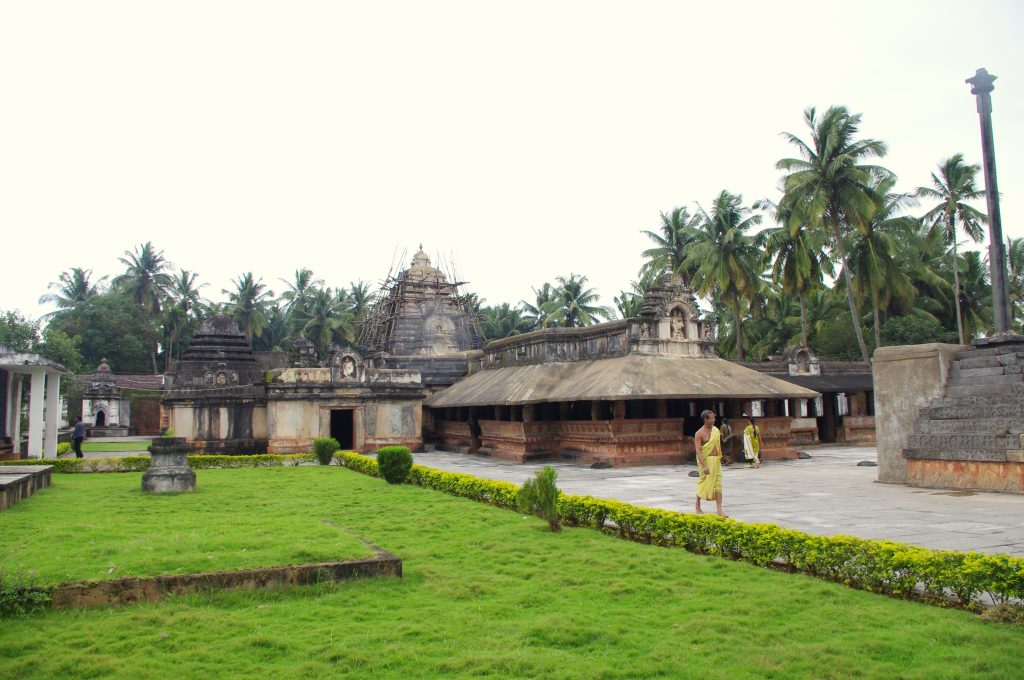Time Travel – 2
In this week’s column, Roopa Pai takes us on a historical field trip to Banavasi as part of her Karnataka themed series.
The Story Of The Kadambas Of Banavasi
What is the best place to begin our journey down the water? At the beginning, of course! And the beginning, in this case, is Karnataka’s oldest town, Banavasi, which sits pretty on the banks of the Varada river in Shimoga district. Today, Banavasi is not much more than a sleepy little town, but long, l-o-n-g ago, it was the heart of a glorious kingdom.
Until 345 AD (exactly 1666 years ago, in fact, for those of you who like to be precise about these things), the region we now call Karnataka had always been ruled by ‘outsiders’ – the Mauryas from Bihar, the Satavahanas of Andhra, the Pallavas of Tamil Nadu – kings who had not sprung from native soil, so to speak. But by the first half of the 4th century, the winds of change had begun to blow across south India.
The Rise Of An Empire
One of the drivers of this change was a young Brahmin called Mayurasharma, a native of Shimoga. He had always been a good student, and when he had learned all he could at the little Vedic school in his village, he decided to proceed with his grandfather – who was also his guru – to Kanchipuram, the capital of the Pallava kingdom and the acknowledged center of Vedic learning.
As they drew closer to Kanchi, the travelers realized that they had arrived in the middle of an important ceremony – the Ashwamedha Yagna, or the Horse Sacrifice. Details of what happened thereafter are sketchy, but an ancient inscription from the time reveals that a Pallava guard at the yagna insulted the young Brahmin in some fashion and refused him admittance.
Furious, Mayurasharma abandoned his education, changed his name to Mayuravarma (Varma was a Kshatriya surname, while Sharma was a Brahmin one), and ‘unsheathed a flaming sword to conquer the earth’. The Pallava kings, who were already on the back foot, with the great emperor Samudragupta swooping down upon them from the north, could not contain the brash upstart.
In 345 AD, Mayuravarma declared himself an independent ruler and ascended the throne at Banavasi as the first king of the Kadambas, the first native dynasty to rule the state. The Kadambas would rule a large kingdom, which included parts of Karnataka, Goa and Maharashtra, for the next 200 years.
The Kadambas were the first rulers to use the local language, Kannada, as the language of administration. The earliest use of the Kannada script – on the Halmidi stone inscription, discovered in the village of Halmidi near Hassan – has been traced to the Kadamaba period. Recently, Kadamba coins from the same period were unearthed – which prove that Banavasi had a flourishing mint over 1500 years ago!

Celebrating The Kadamba Influence
Banavasi was also the place where the first great poet of the Kannada language, Adikavi Pampa, lived and worked 400 years after the end of the main Kadamba dynasty. He wrote many verses praising the town, declaring ‘I shall cherish the sweet memories of Banavasi even when I am being tortured’ and wishing he could be reborn ‘as a bee or a nightingale in this beautiful country of Banavasi’.
The little town by the Varada is also a great example of religious tolerance – given that the early Kadambas were Hindu and the later ones Jain, and given the strong Buddhist influence since the time of the Mauryas, Banavasi has shrines dedicated to all three faiths.
And if you are thinking ‘Ho-hum, but the Kadambas are ancient history now’, I have news for you – the Kadambas are celebrated even in the 21st century. In 2005, India’s first and most advanced military naval base was commissioned in Karwar. Its name? INS Kadamba!
EXTRA! EXTRA!
- Visit! The ancient Madhukeshwara Temple in Banavasi, first built by the Kadambas, and later added to by the Hoysalas and Chalukyas.
- Watch! The 1975 Kannada blockbuster Mayura – a historical drama about Kadamba king Mayuravarma, starring Dr Rajkumar.
- Attend! Kadambotsava, Banavasi’s annual cultural festival. Don’t forget to gorge on the famous Banavasi pineapple, and pick up a Yakshagana mask as a souvenir.
Nadi Notes
The Varada River originates at Varadamoola, 6 km from Sagara in Shimoga district, deep in the hills of the Western Ghats in north-western Karnataka. From there it flows through the districts of Haveri and Bellary, finally joining the Tungabhadra at Galaganath. The Varada has many dams across it and provides water for irrigation and for drinking to places all along its course.
Liked reading this? Then you might also like to read Time Travel: A River Runs Through It – River Of Life.
This set of weekly columns was published in the student edition of Deccan Herald during the school year 2011-12.
If there’s any story that needs to be told, we will tell it. Write to us at contact@knowyourstar.com with your story lead, or contact us on Facebook or Twitter.